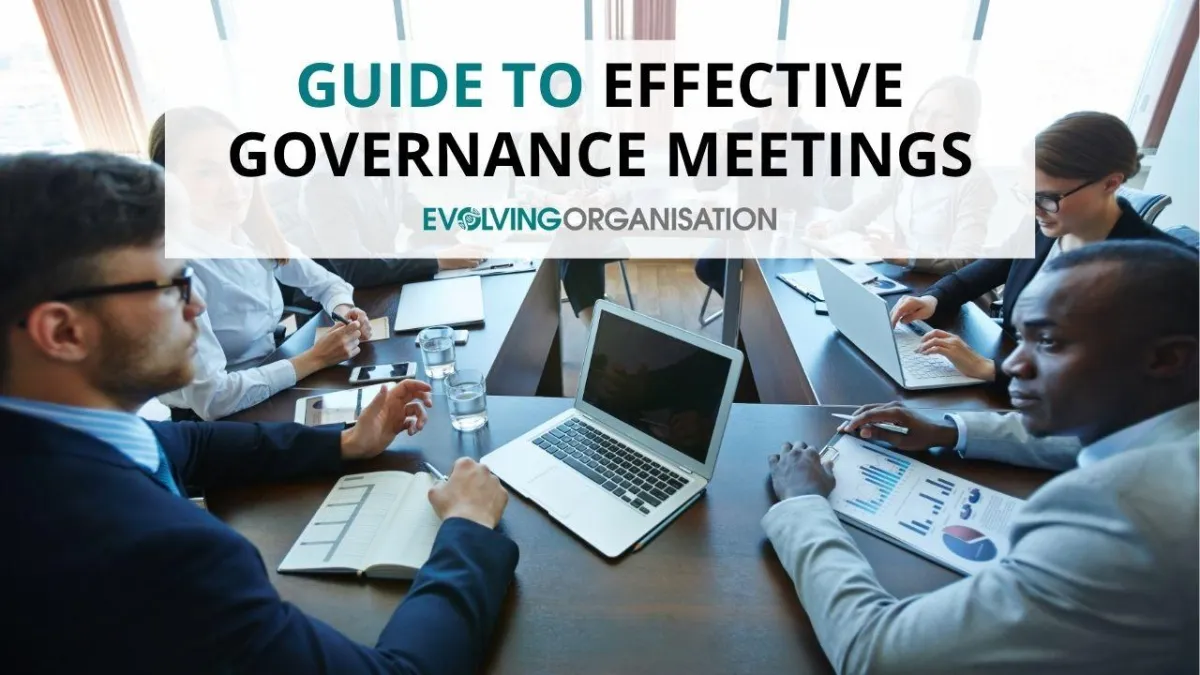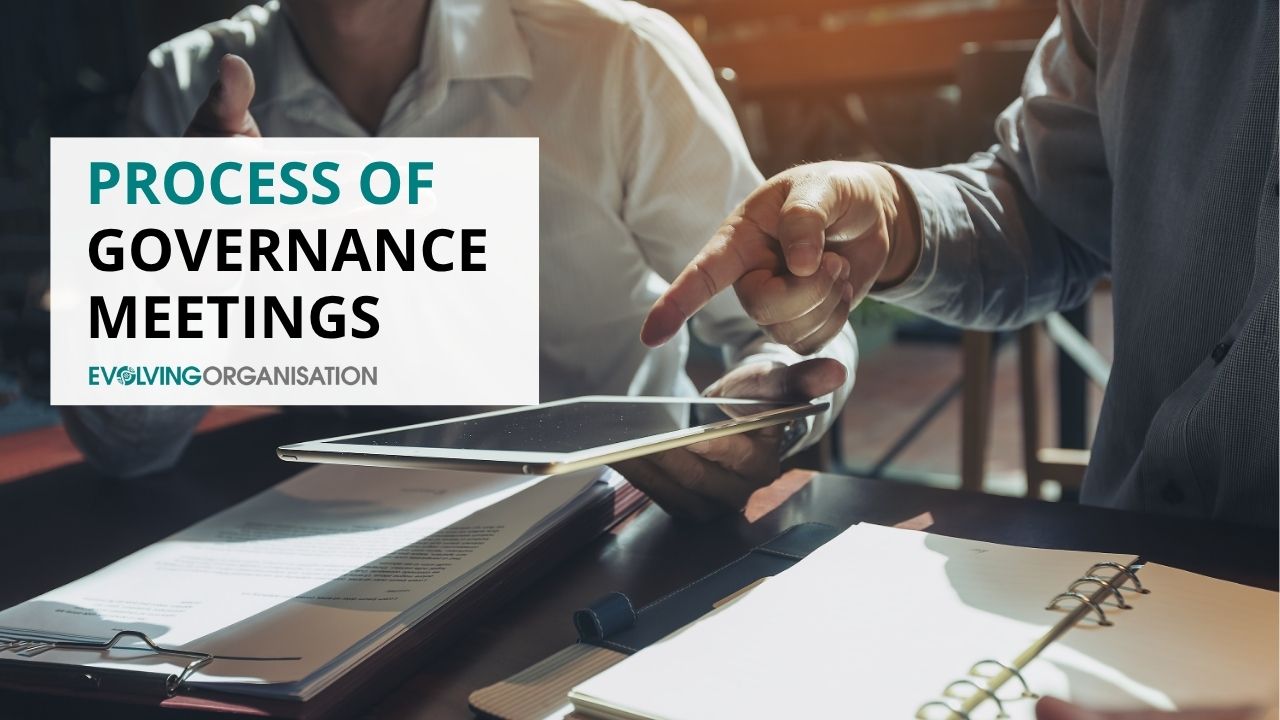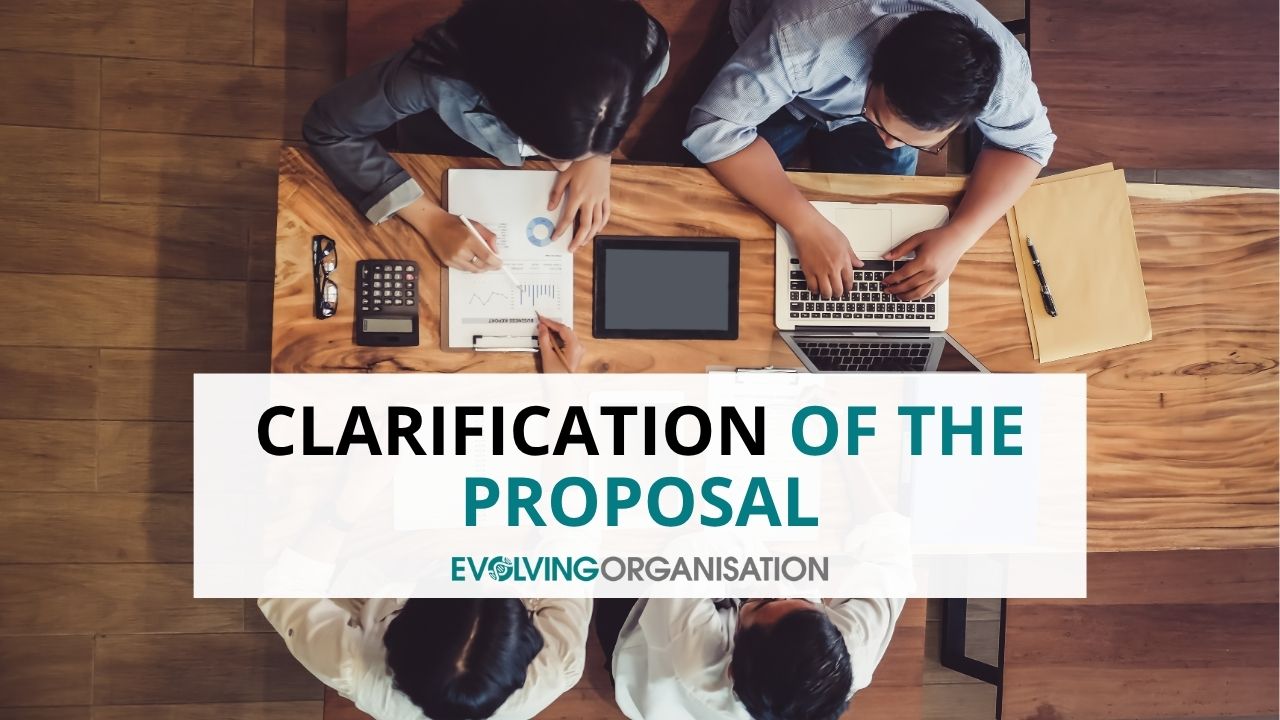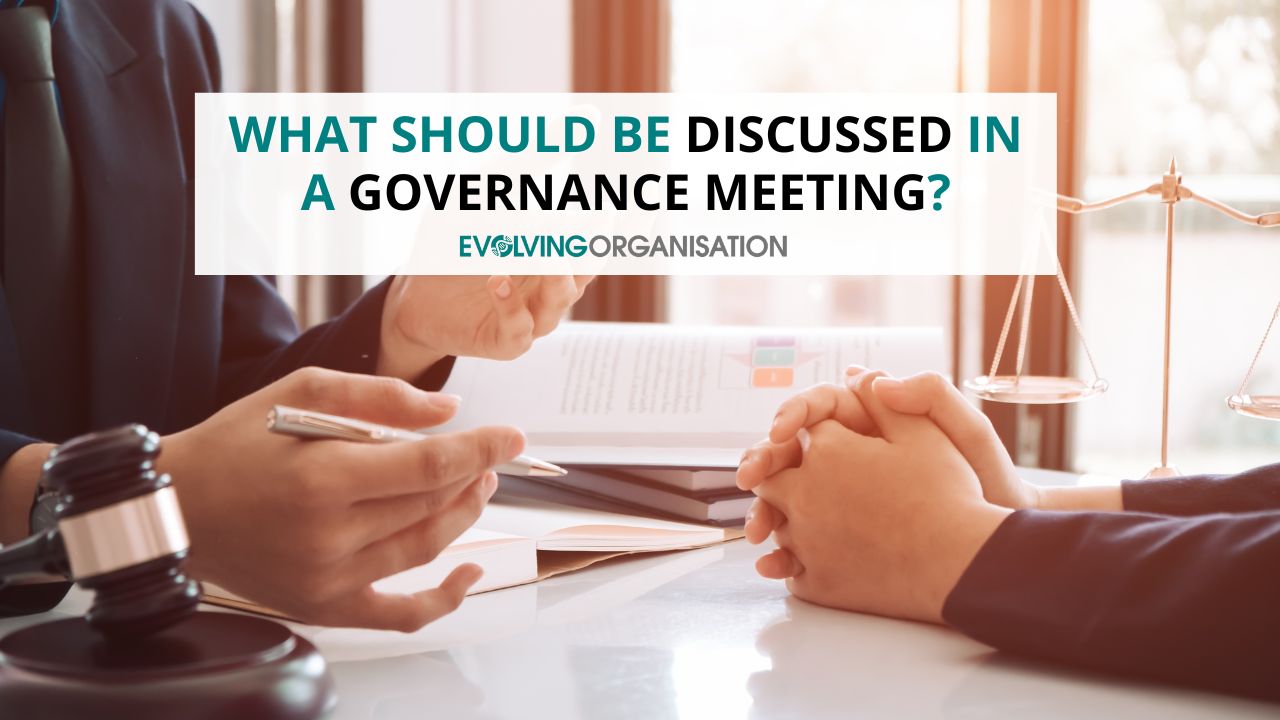
Guide To Holacracy Governance Meetings
Our Step-by-step Guide To Effective Governance Meetings
Effective governance meetings are the backbone of self-managing teams and distributed authority, especially those using Holacracy Structure. They are essential for maintaining clarity, aligning purpose, and ensuring everyone’s voice is heard when making decisions about the roles and governance of that Team.
When conducted well, these meetings foster transparency, empower teams, and support continuous organisational evolution. This guide provides a straightforward, practical approach to running governance meetings that are productive, inclusive, and aligned with Holacracy.
What Is A Governance Meeting?
Definition
A governance meeting is a structured forum where teams review, update, and clarify their roles, policies, and operational rules. Unlike operational or tactical meetings, governance meetings focus on the organisation’s structure and authority flows. They are designed to clarify who can decide on specific issues, ensuring that the organisation remains adaptable and resilient.
Objectives
The main objectives of a governance meeting are to:
- Create/amend/update/remove/clarify roles and accountabilities
- Update policies and operational rules
- Resolve ambiguities or conflicts about authority
- Adapt a team’s/organisation’s structure in response to changing needs
- Foster transparency and shared understanding
By achieving these objectives, governance meetings support a self-organising culture where transparent decision-making is distributed.
What Are Holacracy Tactical Meetings?
Process of Governance Meetings

A well-structured process ensures governance meetings are efficient and effective. Here’s a step-by-step outline based on best practices from holacracy and self-managing team principles.
Check-in
Start with a check-in to ground participants and foster presence. This can be a quick round where each participant shares their feelings or needs from the meeting. The check-in sets a collaborative tone and prepares everyone for open participation.
Build the Agenda
Next, the Facilitator rapidly builds the agenda. Team members bring live tensions/topics or proposals requiring governance decisions. This step ensures the meeting remains relevant and focused on current organisational needs. The Facilitator then leads the following process for each agenda item one at a time.
Presentation Of Proposal
A proposer presents their tension and/or their proposal for change. This could relate to roles, policies, or any rules/constraints relating to operations. The presentation doesn’t have to be well-formed at the start—the meeting Facilitator and Secretary can help make it clear and concise so that everyone can see what change the proposal would make if accepted.
Clarification Of the Proposal

Participants ask questions to fully understand the proposal. Clarification ensures everyone is on the same page and reduces misunderstandings.
Reactions To the Proposal
Participants share initial reactions, including support, concerns, or suggestions. This stage encourages open dialogue and early feedback.
Amend and Clarify Proposal
Informed by the questions and reactions, the proposer can amend or clarify the proposal if they want to. This iterative process refines the proposal to meet organisational needs better.
Objections To Proposal
Participants voice objections if they have concerns about the proposal or see potential issues or risks. Objections are not blockages but opportunities to address problems and improve the proposal. The Facilitator tests the objections according to criteria identified in the Holacracy Constitution.
Integration And Amendment Of Proposal
If there are any valid objections, the Facilitator works with team members to integrate them and adjust the proposal. The goal is to find a solution that removes the objections without causing new objections for the objector or proposer.
After an amended proposal is presented, the Facilitator returns to the objection round to check whether this new amended proposal raises any new objections from other team members. This cycle of Objection and integration continues until no further objections are raised, at which point the proposal is accepted.
The Facilitator then applies the same process to the following agenda item.
Closing Round

Finally, a closing round allows participants to share their feelings about the meeting or any final comments. This step ensures that all voices are heard and that the Team leaves the meeting with a sense of completion.
---
Best Practices For Conducting Effective Governance Meetings
Prepare in advance: Bring any topics/issues/tensions to the meeting you want to address. If you want, you can craft a proposal in advance, but it’s not necessary.
Stick to the process: Follow the structured steps led by the Facilitator, who knows how these Governance Meetings work to maintain clarity and efficiency.
Limit meeting length: Keep meetings focused and concise, typically up to 90 minutes, but they can go longer if needed.
Encourage participation: The Facilitator follows the meeting process in which all voices in a team can be heard.
Use clear language: Avoid jargon; be precise and straightforward.
Document decisions: Record agreed-upon changes in your Governance Records for transparency and Accountability.
Process issues/tensions regularly: These meetings happen regularly to maintain organisational clarity.
---
What Is a Governance Meeting Card?
The governance meeting card is a simple visual tool that captures the essential elements of the Governance Meeting process. Facilitators often use a card to help them adhere to the process, and team members can also use it to follow along with the meeting.
Example Of Governance Meeting Process
Let’s consider a practical example:
1. Check-in: Each team member briefly shares what is on their mind, how they are feeling, and what they need to say to arrive at the meeting fully, one by one.
2. Build the agenda: Team members add their items.
3. Present Proposal: The proposer explains the need to clarify work responsibilities that are being done but not yet covered by any roles. This proposal outlines new Accountability for several roles and a policy.
4. Clarifying Questions: Questions are asked about how the Accountabilities will be divided across the roles.
5. Reactions: Team members give their reactions to the proposal one by one, including raising concerns about the workload.
6. Amend and Clarify: The proposer adjusts the proposal to incorporate some of the points raised in the questions and reactions that helped them better resolve their original tension.
7. Objections: A team member objects, citing potential overlaps with existing roles. The Facilitator tests the Objection and discovers it’s valid.
8. Integration: The Facilitator leads the discussion to amend the Accountabilities further to remove the overlaps.
9. Closing Round: Participants go around one at a time to share how they are now at the end of the meeting and what they need to say to feel complete so they can move on to the next thing.
---
What Should Be Discussed In A Governance Meeting?

Governance meetings focus on topics related to the organisation’s structure and authority, including:
Role definitions and accountabilities
Policies affecting operational decision-making
Clarifications of authority boundaries
Structural changes in response to evolving needs
Resolving conflicts or ambiguities about decision rights
Reviewing and updating operational policies
They do not typically cover day-to-day operational issues handled in tactical meetings or operational forums.
In conclusion, governance meetings are vital to self-managing teams and distributed authority frameworks, especially those using Holacracy. When run systematically and with clarity, they unlock organisational agility, empower individuals, and foster a culture of continuous evolution. Embracing these practices transforms traditional hierarchies into resilient, adaptive networks of empowered team
Holacracy can be adopted in full, or the practices that suit a specific team or organisation can be adopted. If you want to embark on this journey, we can help you assess your organisation’s readiness and ensure you have the resources and mindset to sustain the change.
Take our free 10-minute Team Needs check here to find out if your Team has needs that this approach could help. Our Team Clarity & Faster Decision-Making program can help you fully or partially adopt Holacracy practices. With the right approach, such post-hierarchical ways of working can be a powerful tool for navigating today’s complex and uncertain business landscape.
Suppose you want to learn these practices in depth. In that case, programs like Team Clarity & Faster Decision-Making and The Meetings Revolution offer step-by-step guidance and practical tools to help your Team make these shifts confidently and effectively.
When you move beyond hierarchy and empower your Team to own their roles, communicate openly, and adapt quickly, you don’t just improve performance—you create the foundation for lasting success in a fast-changing world.
This blog continues our commitment to improving performance and decision-making within organisations. Stay tuned for our next instalment, where we will explore a range of practical tools for this purpose.
Visit our website for more insights and resources. Together, let’s evolve and adapt to the challenges of our dynamic world and build a better, more collaborative future.


